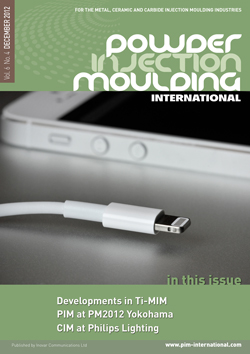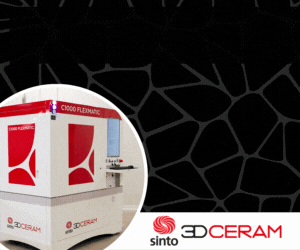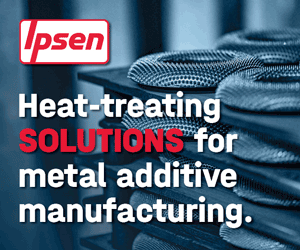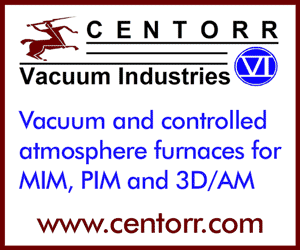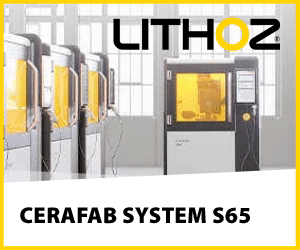PIM International, Vol. 6 No. 4 December 2012
Prefer a PDF download? Click here
In addition to 25+ pages of news from the metal and ceramic injection moulding industry, the 80 page December 2012 issue of Powder Injection Moulding International (Vol.6 No.4) includes the following articles and special features:
Titanium MIM at Euro PM2012: Commercial considerations, materials, processing and applications
A Special Interest Seminar at the Euro PM2012 Congress, Basel, Switzerland, 16-19 September, presented an opportunity to review progress to-date on global developments on the MIM of titanium. Dr. Thomas Ebel, Helmholtz-Zentrum Geesthacht, Germany, reports on a selection of key presentations from the seminar and the Euro PM2012 technical programme and considers what progress has been made since the first Euro PM Special Interest Seminar on the MIM of titanium, held in Ghent in 2006.
View online | Download Single Page Edition | Download Double Page Edition
Philips Lighting: The evolution of PIM HID lighting components and the potential for transparent alumina products
Philips Lighting in Uden, the Netherlands, is a major producer of ceramic components for high intensity lighting applications. It is a part of the lighting division of Koninklijke Philips Electronics N.V., commonly known as Philips, the Dutch multinational electronics company headquartered in Amsterdam, which employs 122,000 people worldwide. Philips Lighting’s Uden plant is today at the forefront of advanced PIM technology for lighting applications, however it has its sights set on the wider application of its technology. Dr Georg Schlieper reports on a recent visit for PIM International.
View online | Download Single Page Edition | Download Double Page Edition
PM2012 World Congress: Special Interest Seminar reveals strong global growth for PIM, with Asia leading the way
The PM2012 Powder Metallurgy World Congress, jointly organised by the Japan Powder Metallurgy Association (JPMA) and the Japan Society of Powder & Powder Metallurgy (JSPPM) under the auspices of the Asian Powder Metallurgy Asian (APMA) was held in Yokohama, Japan, October 14-18. PIM International’s Nick Williams reports on a Special Interest Seminar that reviewed global trends in PIM markets and revealed the extent to which the industry is enjoying dramatic sales growth, with Asia leading the way.
View online | Download Single Page Edition | Download Double Page Edition
PM2012 World Congress: PIM focuses on novel and new materials for advanced applications
The PM2012 Powder Metallurgy World Congress, jointly organised by the Japan Powder Metallurgy Association (JPMA) and Japan Society of Powder & Powder Metallurgy (JSPPM) under the auspices of the Asian Powder Metallurgy Association (APMA) was held in Yokohama, Japan, October 14-18. The Congress featured a number of technical sessions devoted to PIM, and Bernard Williams reviews some of the papers featuring novel and new materials and their potential applications.
View online | Download Single Page Edition | Download Double Page Edition
Advances in the Metal Injection Moulding of Mg-Ca alloys for biomedical applications
Magnesium-Calcium alloys are attracting interest for use in biomedical
applications thanks to the material’s biodegradability and its mechanical
properties that closely match cortical bone. MIM processing additionally
offers the ability to produce structures with both dense and porous
areas. Martin Wolff and co-authors review the complete production
cycle for MIM Mg-Ca alloys and present initial mechanical properties for
sintered specimens.
View online | Download Single Page Edition | Download Double Page Edition
Carbon removal as a crucial parameter in the Powder Injection
Moulding of aluminium alloys Christian Gierl, Herbert Danninger, Armineh Avakemian, Julia Synek, Jochen Sattler, Branislav Zlatkov, Johan ter Maat, Alexander Arzl, Hans-Claus Neubing
Manufacturing of complex-shaped precision parts by powder injection moulding (PIM) is state of the art for many metallic and ceramic materials but not yet for aluminium alloys, which is commonly attributed to the oxide layers covering the powder particles. In the present work it is shown that not only oxygen but also nitrogen and in particular carbon, which in PIM materials is introduced in large quantities through the binder, play a major role in the sintering process. Removal of as much carbon residue as possible during thermal debinding of the backbone component is essential for successful sintering; this can be done most advantageously by debinding in an oxygen atmosphere without significant oxygen pickup. Sintering in high purity nitrogen then results in pronounced shrinkage and strong interparticle bonding.
View online | Download Single Page Edition | Download Double Page Edition
Processing of a low modulus Ti-Nb biomaterial by Metal Injection Moulding (MIM)
J.-E. Bidaux, C. Closuit, M. Rodriguez-Arbaizar, D. Zufferey, E. Carreño-Morelli
Ti alloys containing β stabilising elements such as Nb, Zr and Ta are particularly promising as implant materials because of their excellent combination of low modulus, high strength, corrosion resistance and biocompatibility. A low elastic modulus is important for implants to avoid stress shielding and associated bone resorption. The difficulty of producing complex shapes of these alloys by conventional methods makes Metal Injection Moulding attractive. In this work, Ti-17Nb alloy parts with densities of 94% of theoretical density have been produced by metal injection moulding of a feedstock based on blended elemental powders. Scanning electron microscopy reveals a typical α-β Widmanstätten microstructure with a precipitated α phase layer along the grain boundaries. The parts exhibit an ultimate tensile strength of 768 MPa and a plastic elongation of over 5%. The modulus of elasticity, about 84 GPa, is more than 20% lower than that of CP Ti and Ti-6Al-4V.
View online | Download Single Page Edition | Download Double Page Edition
Microstructure and tensile properties of Hadfield steel produced by Metal Injection Moulding
M. Cazzolli, C. Menapace, M. Perina, A. Molinari
In the present work the production of a Hadfield steel by MIM was studied. The main elements in the powder are: 13.4% Mn, 1.3% C, 1.0% Si and Fe to balance. A feedstock with a proprietary binder was used (35 % vol.) and samples were produced by injecting the molten feedstock at a temperature of 190°C into the die thermostabilised at 50°C using a pressure of 1100 bar. A first debinding step took place in water for 10h in order to remove part of the binder followed by thermal debinding at 600°C for 1h. Sintering was carried out in the range between 1250°C and 1300°C, followed by heat treatment (30 min. at 1000°C, cooling rate 5°C/s). The density of the different samples was measured and the microstructure was analysed to evaluate its effects on tensile properties. An important characteristic of this steel is the high strain hardening of the stable austenite. Tensile strength and elongation are comparable to those of the cast steel, even in the presence of some residual porosity, highlighting MIM as a good technique to produce Hadfield steel components. Optimal tensile properties are achieved only after heat treatment, eliminating the presence of precipitates along the grain boundaries.
View online | Download Single Page Edition | Download Double Page Edition
Browse our PDF archive by year
The following years of Powder Injection Moulding International magazine are available to download in PDF format, free of charge, from our archive.




